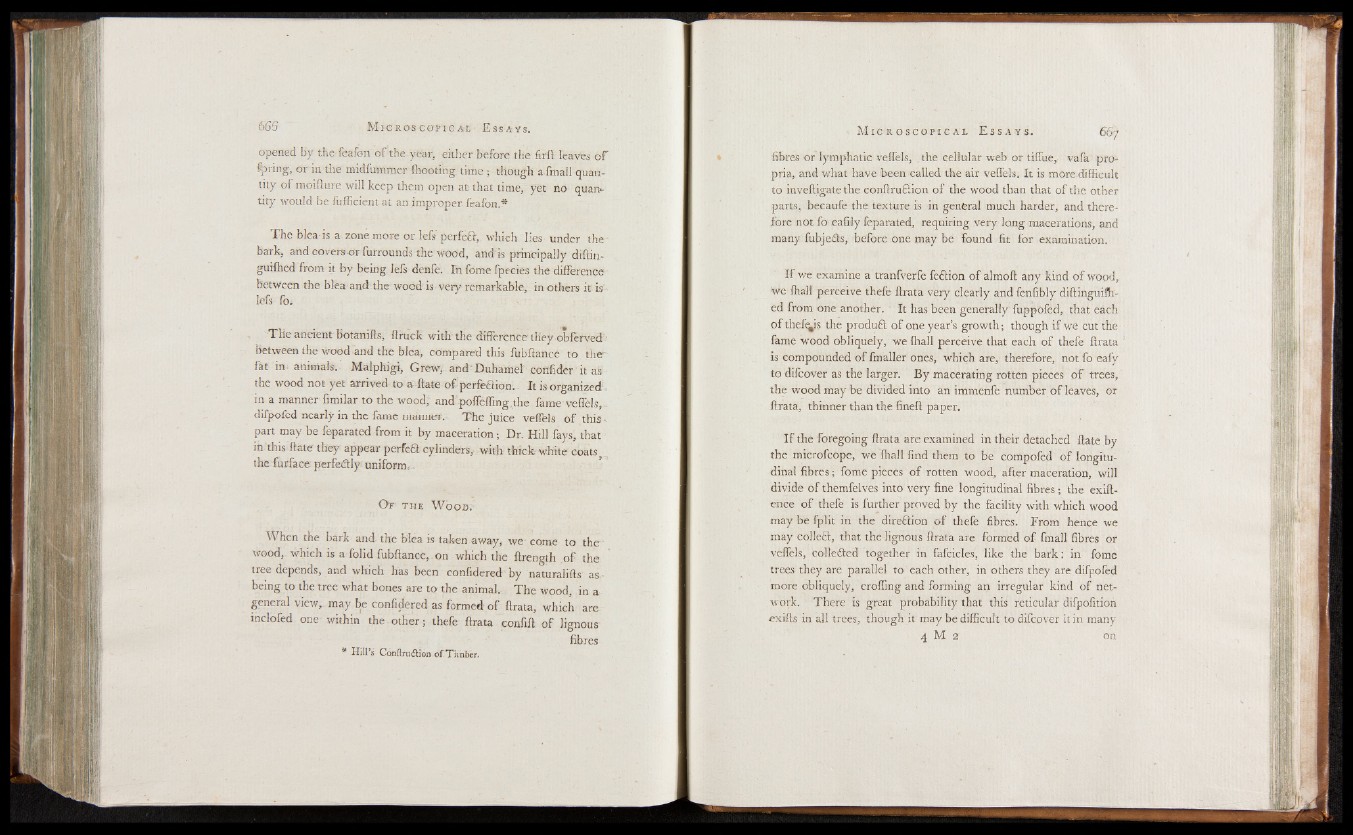
opened by the feafon of the year, either before the firft leaves o f
%>ring, or in the midfummer {hooting time ; though a.finall quantity
o f moifture will keep them open at that time,: yet no quantity
would be fufficient at an improper feafon.*
The blea-is a zone more or lefsperfeft, which lies under the-
bark, and coversor furrounds the wood, and is principally diftin-
guifhed from it by being Iefs denfe. In feme fpecies the difference
between the blea and the wood is very remarkable, in others it is
lefs fo.
The ancient Botanifts, flrack with the difference they obferved";
between the wood and the blea, compared this fubftance to the
fat in animals. Malphigi, Grew, and’Duhamel cortfider it as
the wood not yet arrived to a ftate o f perfeflion.. It is organized
in a manner fimilar to the wood; and‘.poffefling,the famevelfels,
difpofed nearly in the fame manner. The juice veffels of this
part may be feparated from it by maceration; Dr. Hill fays, that
in this ftate" they appear perfect cylinders, with thick-white coats ^
the furface perfe&ly uniform..
O f the Woob.-
When the bark and the blea is taken away, we- come to the
wood,, which is a folid fubftance, on which the ftrength o f the
tree depends, and which has been confidered by naturalifts as
being to the tree what bones are to the animal. The wood, in a
general view, may be confidered as formed o f ftrata, which are
mclofed one within the-other; thefe ftrata confift of lignous
fibres
fibres or lymphatic -veffels, . the cellular web or tiffue, vafa propria,
and what have -been called the air veffels. It is more difficult
to inveftigate the conftruSion of the wood than that o f the other
parts, becaufe the texture is in general much harder, and therefore
not fo eafily feparated, requiring very long macerations, and
many fubjefts, before one may be found fit for examination.
I f we examine a tranfverfe feftion o f almoft any kind of wood,
we fteffi perceive thefe ftrata very clearly and fenfibly diftinguifh-
ed from one another. It has been generally fuppofed, that each
o f th e fts the produft o f one year’s growth; though if we cut the
fame wood obliquely, we fhall perceive that each of thefe ftrata
is compounded of fmaller ones, which are, therefore, not fo eafy
to difcover as the larger. By macerating rotten pieces o f trees,
the wood may be divided into an immenfe number o f leaves, or
ftrata, thinner than the fineft paper.
I f the foregoing ftrata are examined in their detached ftate by
the microfcope, we fhall find them to be compofed of longitudinal
fibres; fome pieces of rotten wood, after maceration, will
divide o f themfelves into very fine longitudinal fibres; the exift-
ence o f thefe is further proved by the facility with which wood
may be fplit in the direction o f thefe fibres. From hence we
may colletl, that the lignous ftrata are formed o f fmall fibres or
veffels, collected together in fafcicles, like the bark: in fome
trees they are parallel to each other, in others they are difpofed
more obliquely, crofting and forming an irregular kind of network.
There is great probability that this reticular difpofition
exifts in all trees, though it may be difficult to difcover it in many
4 M 2 on